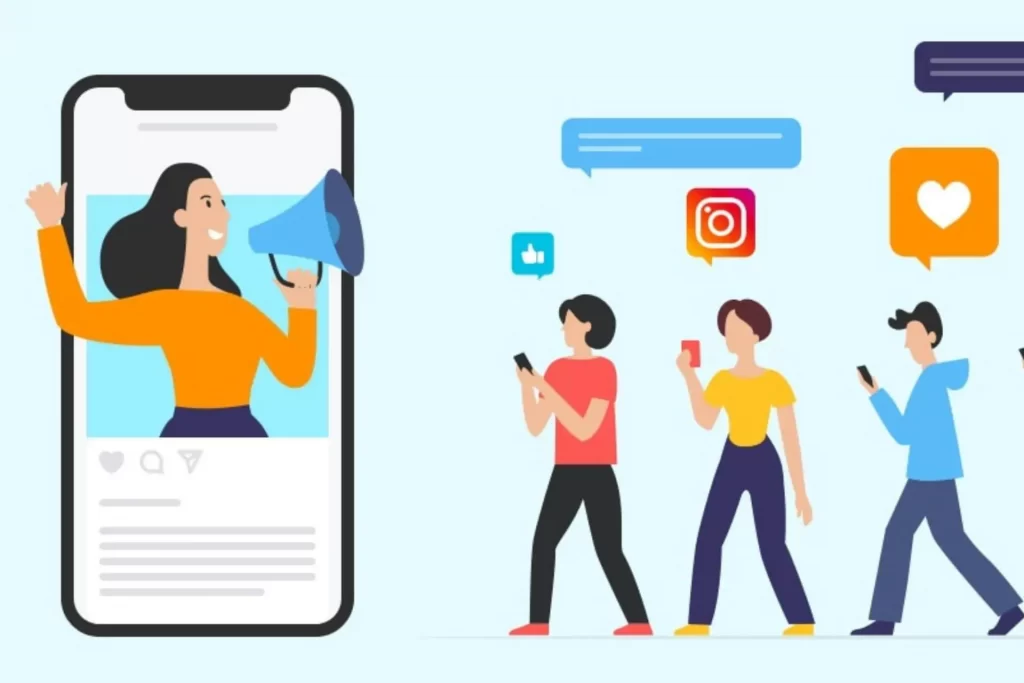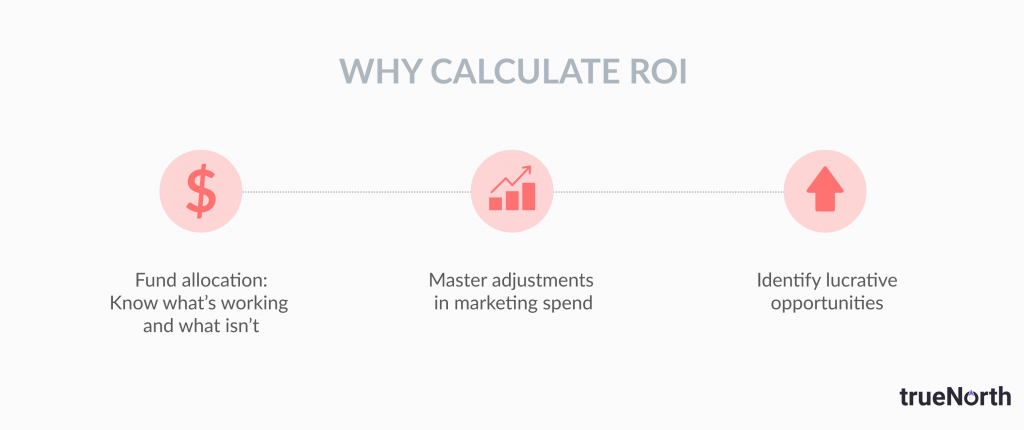How to Build a Strategic Marketing Plan Guaranteed to Succeed
Even if you know all of the ins and outs of marketing, it can still be tricky to devise the right plan to execute your strategy.
I've developed my entire career around one simple idea: To be successful in business, you must first master marketing. If you don't already know the ins and outs of marketing, you will end up struggling and losing money. A strategic marketing plan is essential—it will help you see your weaknesses and build the systems and processes that will propel your business forward.
Today, we're going to talk about why strategic marketing plans work. And if they don't, what can be done instead?
Table of Contents
1 – Determine the Marketing Focus

For any business, marketing strategy plays a vital role in the success of the business. Every company has a unique marketing plan. Marketing strategies differ depending upon their needs and objectives. Let me quickly discuss three significant areas of focus for a business.
- Business Strategy
- Branding Strategy
- Digital Marketing Strategy
Before starting with a detailed discussion of the three focus areas, let us briefly discuss the main components of any marketing strategy.
Business strategy refers to the actions and plans a business entity takes to achieve its objectives. A business strategy differs from a marketing strategy concerned with the goals, objectives, activities, and tactics required to market a product or service.
Brand strategy is one of the critical elements of a business strategy. It refers to how a business wants to portray itself to the market and how a business wants to represent itself to its consumers.
Marketing strategy is the combination of business strategy and brand strategy. It aims at creating awareness about the product or service in the market.
The business objectives of any organisation include growth of revenue, profit, etc. While developing a business strategy, it is essential to understand the market requirements.
A business strategy includes the following areas:
- Product development
- Price and margin policies
- Brand positioning
- Channel strategy
- Distribution strategy
- Marketing mix
- Advertising and promotion strategy
- Sales and pricing policy
- Corporate strategy
- Strategic alliances
- R&D strategy
- Branding strategy
- Competitive analysis
- Organisational structure
- Target groups and products
Now let's discuss the three areas of focus for a business.
Marketing Strategy
You should align the marketing strategy with the company's overall business strategy. A strategic marketing strategy is usually based on the following parameters:
- Products or services
- Target groups
- Marketplaces
- Distribution channels
- Advertising and promotion strategies
- Pricing policies
- Promotion techniques
- Channels
- Geographic reach
- Customer segments and buyer personas
- Key performance indicators (KPIs)
- Technology platforms
- Marketing mix
- Market trends and other issues
Branding Strategy
Branding is defined as the corporate personality of a company. It is a way of presenting the company so that consumers perceive it as friendly and trustworthy. This perception helps the company to build long-term relationships with its customers. Branding plays a crucial role in ensuring the growth and sustainability of a business. Branding helps in the conversion of potential customers into repeat customers.
A branding strategy is divided into two parts.
- Brand position: This includes the attributes that define a business and how the company wants to portray itself to its customers.
- Brand identity: This refers to the company's image, which includes the design, colours, fonts, logo, and other visual elements that define the brand.
2 – Determine a Strategic Marketing Objective

Every business has a strategic marketing objective. But determining what yours is can be tricky. Here are six strategies to help you figure out what your marketing goal should be.
Objectives:
The marketing objective is a critical part of any strategic marketing strategy. Without one, a plan lacks direction and purpose. It defines a single, quantifiable goal. You might think your goal should be general, such as “Get more customers.” But that does not help create a clear, focused strategy. Instead, think about your overall marketing strategy. What do you want your business to accomplish? Your marketing goal should reflect that. An excellent way to start is by considering what you want to achieve.
Your Business Goal:
For your business, choosing a goal that aligns with what you want to accomplish is crucial. This may sound like a simple concept, but it's one that's often overlooked when creating a marketing strategy. The reason is that many businesses focus on the short-term goals tied to their business's day-to-day operations. They forget about the long-term goals that will ultimately affect the success of their organisation.
Your Target Market:
The first step in determining your business goal is identifying your target market. To do so, think about whom you'd like to reach. Whom would you like your customers to be? If your business is in the business of selling computers, for example, then you might want to focus on people who are interested in buying computers.
Strategies:
Once you know whom you want to reach, you can determine how to get them to buy from you. This may mean writing copy for an ad, promoting a sale or event, or organising an outreach campaign. Regardless of your marketing type, you'll use a specific strategy to get the job done.
Keywords:
When crafting your strategy, it's important to consider keywords. Keywords are essential because they help you find your target audience. But don't use them just for keywords. Make sure they are part of your overall messaging and sales copy. By doing so, you're helping people find your business while at the same time communicating with them.
Measurement:
After you develop a strategy, you need to track the results. What happens when you run your ad? How does it compare to other types of strategic marketing? How effective is each strategy? These are some of the questions you should ask yourself after you run your campaign. The more you measure, the better your strategy will be.
You now have a clearer understanding of how to determine your business goal. In addition, you have some ideas on how to get started.
3 – Identify the Marketing Audience

Depending on your business type, there are many ways to identify your marketing audience.
You can analyse the email address, name, location, interests, etc. You can even analyse the content of emails. You must choose the correct and most suitable method depending on your business's nature.
For instance, if your company has a web-based service, you can use Google Analytics to identify your customers. This tool can give you helpful information about your customers like their age, gender, location, interests, etc.
If you run an offline business, you can go for mailing lists, local directories or even social media sites.
If you are using an online platform, you can use Facebook insights, Google analytics, or even use the tool provided by MailChimp, GetResponse, etc.
1: Google Analytics
Google Analytics is one of the most used tools for tracking the performance of websites.
It has a simple interface that gives detailed information about the visitors and how they got to your site. You can even get information about the keywords they searched for and their source.
You can get these details quickly by signing into your Google Analytics account.
2: Social Media Marketing
Social media marketing helps to generate new traffic and promote your products.
It also enables you to reach out to people who don't know you yet. You can share valuable information about your products and services.
Moreover, social media platforms also help to increase brand awareness. You can create valuable posts, videos, pictures, and so on, which can help you gain new fans and followers.
3: Mailing Lists
Creating mailing lists can help you to target your prospects with the right message at the right time.
You can also send promotional campaigns and discounts directly to your subscribers. Using the Mailerlite platform, you can integrate your Mailerlite list with your WordPress site.
There are many different ways to identify your marketing audience. You can choose any of these methods depending on your business needs.
4 – Select the Marketing Platform

In today's world, there is a considerable number of marketing platforms available. With so many choices available, it is challenging to select the right one. Here we present you the best marketing platform for you.
What is a Marketing Platform?
Marketing platforms are those platforms that allow us to create and run strategic marketing campaigns on social media. They provide us with various tools like content curation, scheduling, tracking, etc. We can use them to manage multiple campaigns and track their performance. We can use them for either personal or business use.
- Facebook Ads – Social media advertising has become a hot topic recently. Facebook Ads is the most popular of all platforms. This is because it is an excellent tool for targeted marketing. It allows marketers to reach customers and potential customers through ads on Facebook. There are different types of Facebook Ads.
- Image ads – these ads are usually displayed in the newsfeed. These ads show images which are associated with a brand. If users like the image, they can click on the link to view the ad.
- Video ads – you can view these ads in the feed and video box. These videos are either animated or have text at the bottom. These ads often link to the company's website or page.
- Instagram ads – Instagram is an image-sharing platform. You can place ads on Instagram on the profile and the stories. These ads are similar to those on Facebook.
- LinkedIn ads – LinkedIn is another social media site where you can display ads. The ads are in the form of messages that appear within the user's feed.
- Twitter ads – Twitter can show these ads on the timeline, search results or through the promoted tweets.
- Google ads – Google is the king of the internet. Anywhere you go on the internet, you will see a Google ad. The ads can be seen on Google search and in the right-hand column.
Which one should you choose?
As said earlier, there are several options for you to choose from. However, it depends on your budget and if you need to use a third-party app or software. If you are a company that uses other software and apps, then it is essential to integrate them into your strategic marketing campaigns.
The most important thing to consider is whether or not the tool is free. You don't want to spend thousands of dollars on a marketing tool that doesn't work.
5 – Choose the Right Content

Content marketing is creating and distributing valuable free content to attract, acquire and retain customers.
There are three types of content:
- Informational
- Qualitative
- Quantitative
Informational content provides information about your business. It is generally written in articles, whitepapers, reports, brochures, etc.
Qualitative content is in the form of video, audio and graphics. It helps to provide a better customer experience by creating an emotional connection.
Quantitative content includes forms, surveys, quizzes, case studies, polls, etc. It helps to provide data-driven insights to gain customer insights.
Here are the differences between the three types of content:
Informational Content
It is a type of content that provides information about your business. For example, a brochure can be informational because it discusses your services and products.
Qualitative Content
It is a type of content that provides emotional and experiential value. For example, a video can be qualitative content because it shows how your product or service is used and enjoyed.
Quantitative Content
It is a type of content that provides quantitative data about your business. For example, a survey can be quantitative content because it asks questions about your business and seeks answers to these questions.
Strategic marketing is creating and distributing valuable free content to attract, acquire and retain customers.
6 – Determine the Most Effective Marketing Channel

Marketing channels are the marketing methods used to reach and attract your company's audience. They include direct mail, email, social media, mobile, direct response, online advertising and many more.
It is essential to choose the right channel so that it attracts the right kind of audience. Choosing the wrong channel will only lead to wasted money and resources.
So what is the best marketing channel? Here is a simple guide to your business's most effective marketing channels.
This is the most accessible and most affordable method of marketing. It gives you free visibility and makes it easy for people to share your brand with friends. This type of marketing is also known as organic marketing.
With email marketing, you can send emails to your customers. You can offer them discounts, newsletters and other information about your products. This is a cost-effective way of marketing because there are no additional expenses involved.
Direct Mail
In this strategic marketing method, you write a letter and send it to your targeted audience. This helps you communicate with your target audience. This can be expensive but has the highest ROI (Return On Investment).
Search Engine Marketing (SEM)
With search engine marketing, you can increase your brand's visibility by improving your rank in search results. There are various ways to do this. One of the most common ways is to use keywords on your web pages and the title tag of your website.
When people search for a specific keyword, they will see your website in the results list. So if you are promoting a product that uses a particular keyword, you will get more traffic.
Display Advertising
Advertising is one of the most effective ways of attracting new customers to your business. This works best if you are targeting the right audience. It allows you to target specific audiences rather than broadcast your messages. You can use display ads, banners, videos and text ads.
Mobile marketing is all about delivering messages to smartphones and tablets. You can use apps, text messages and push notifications to reach your audience. It's a great way of keeping in touch with your audience.
Videos have become a compelling form of communication. With the help of video marketing, you can deliver your message to your audience and keep in touch with them.
There are many marketing channels, but the best ones are the ones you can afford and bring the most results.
7 – Evaluate the Results

The first thing you need to do is evaluate the ROI of your marketing. ROI stands for Return on Investment. It's a way of evaluating the success of a particular marketing campaign. The return on investment is calculated by dividing the money spent on the campaign by the money earned.
This method is the most common and accepted way to calculate the return on investment. However, it has two main drawbacks. The first one is that it doesn't always work as it should because it doesn't consider all the aspects of a campaign.
It's imperative to consider all the things that affect a particular campaign. So if you want an accurate idea of how much money you're spending on your marketing, you should divide the total amount of money you spent on marketing by the total amount of money you earn from your marketing.
This way, you'll be able to figure out exactly how much money you spend on marketing, how much of it goes towards the products you sell, and how much is left for you.
Another drawback is that it doesn't measure the effectiveness of strategic marketing strategies. A successful marketing campaign can have different results depending on the market and the competition in that particular niche.
You need to combine the ROI calculation with another evaluation method.
One of the most critical factors of a successful marketing strategy is to evaluate the results. You need to be able to tell whether the results you're getting from your marketing are the ones you wanted. In this case, you must look at the data you collect and analyse.
If you can collect data, it's easy to evaluate the results. All you need to do is find out whether you've been gaining more customers than expected. This way, you can see whether your marketing strategies are working and whether you're reaching the right target audience.
Conclusion
No one strategy works for all businesses. Businesses that sell through retail outlets are better off than those that sell through online channels. But each strategy has its strengths and weaknesses.
One thing is sure: the best approach will depend on the unique circumstances of your business. This is why it's essential to consult a professional specialising in strategic planning and marketing for advice on which approaches suit you.
Find out how we can help you with your strategic marketing needs and learn how we're helping clients grow their businesses.
